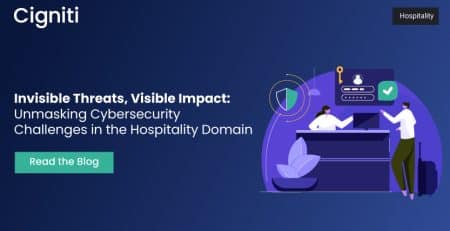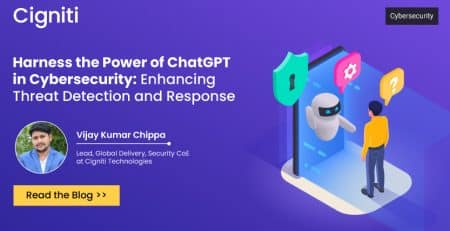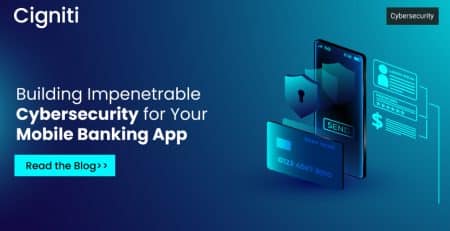Why an Integrated Approach to Data and Cybersecurity Critical for CXOs
In the digital age, where data is often regarded as the new oil, businesses are responsible for safeguarding their most valuable asset – Information. Data breaches, cyberattacks, and vulnerabilities have surged to unprecedented levels, prompting organizations to invest significantly in bolstering their defenses.
Cybersecurity statistics reveal a staggering rate of 2,200 cyber attacks occurring daily, with a new attack occurring approximately every 39 seconds. Within the U.S., the average data breach cost is $9.44 million, while cybercrime is anticipated to incur a staggering $8 trillion by the end of 2023.
Yet, a question that often arises in the boardrooms of Fortune 500 and Global 2000 companies is whether to prioritize data security or cybersecurity. Is one superior to the other, or should they coexist in a comprehensive strategy? Let’s delve into this critical debate.
The Distinction Between Data Security and Cybersecurity
It’s crucial to understand the distinction between data security and cybersecurity. These two domains are interconnected but have distinct focuses and objectives.
Data Security: Data security revolves around protecting data confidentiality, integrity, and availability. It encompasses strategies, technologies, and practices designed to safeguard sensitive information from unauthorized access, disclosure, alteration, or destruction. Data security primarily involves securing data at rest, in transit, and during processing.
Cybersecurity: Cybersecurity, on the other hand, has a broader scope. It encompasses protecting digital assets, including networks, systems, devices, and data, from a wide range of cyber threats. Cyber security aims to defend against unauthorized access, cyberattacks, malware, phishing attempts, and other malicious activities that can compromise the entire digital ecosystem.
The Nexus Between Data and Cybersecurity
While data and cybersecurity address different aspects of the security landscape, they are undeniably interconnected. Data is a prized target for cybercriminals, making data security a critical component of cybersecurity. According to reports, 300,000 new malware instances emerge daily, with a staggering 92% distributed via email and a detection window of 49 days. Conversely, a broader cybersecurity infrastructure breach can lead to data breaches and compromise sensitive information.
Considerations for CXOs, VPs, and Directors
In a 2023 global survey of Chief Information Security Officers (CISOs), email fraud emerged as a prominent cybersecurity concern, with approximately 33% identifying it as one of the top three cybersecurity threats. Additionally, 30% of the respondents identified insider threats as a significant cybersecurity risk to their organizations. When deciding whether to prioritize data security or cybersecurity, CXOs, VPs, and Directors must consider several key factors such as:
- Business Objectives: Start by aligning security priorities with your organization’s objectives. Understand the criticality of data and how it underpins your core operations. High-value data, such as customer information or intellectual property, may require an emphasis on data security.
- Compliance Requirements: Assess your organization’s industry-specific regulations and compliance standards. Compliance mandates, like General Data Protection Regulation (GDPR) or Health Insurance Portability and Accountability Act (HIPAA) may require a strong focus on data security to ensure regulatory adherence.
- Risk Assessment: Conduct a comprehensive risk assessment to identify potential threats and vulnerabilities. Evaluate the impact of data breaches versus broader cyberattacks on your organization. This assessment can help determine where to allocate resources.
- Resource Availability: Consider budget, personnel, and technology resources. Balancing data and cyber security may require a nuanced approach that depends on resource constraints.
- Integrated Strategy: Ideally, organizations should adopt an integrated approach that combines data security and cyber security. These two domains should complement each other to provide comprehensive protection. A breach in one area should not compromise the other.
The Holistic Approach: Integrated Data and Cyber Security
In today’s digital landscape, the choice between data security and cyber security is not binary but rather complementary. Organizations should adopt a holistic security approach integrating both domains to create a robust defense strategy. Here’s why:
- Data is King: Data is at the heart of modern businesses. Customer information, financial data, intellectual property, and proprietary algorithms are the lifeblood of organizations. Prioritizing data security ensures the protection of these invaluable assets.
- Cyberattacks are Multi-faceted: Cyberattacks come in various forms, from Distributed Denial-of-Service (DdoS) attacks to phishing attempts. A comprehensive cyber security framework safeguards against these threats while preventing data breaches.
- Data Breaches are Costly: Data breaches can result in severe financial and reputational damage. The costs associated with data breaches, including legal fees, regulatory fines, and customer trust erosion, necessitate a strong focus on data security.
- Compliance is Non-negotiable: Many industries face stringent compliance requirements. Prioritizing data security ensures compliance with data protection regulations, reducing legal and financial risks.
- Cyber Resilience: An integrated approach to data and cybersecurity enhances an organization’s cyber resilience. It means being prepared not only to defend against attacks but also to recover swiftly when breaches occur.
- User Awareness: A comprehensive strategy incorporates user awareness and training, reducing the risk of human errors that can lead to data breaches and cyber incidents.
The answer lies in balance in the ongoing debate of data security versus cybersecurity. Fortune 500 and Global 2000 companies must recognize that both are essential to a comprehensive security strategy. Prioritizing one over the other can create vulnerabilities that cybercriminals may exploit.
The message is clear for business leaders at the CXO, VP, and Director levels: embrace a holistic approach integrating data security and cybersecurity. Doing so protects your organization’s most valuable assets and fortifies its resilience against the ever-evolving landscape of cyber threats. In today’s digital age, where the stakes are higher than ever, it’s not about choosing between data security and cybersecurity; it’s about ensuring they work hand in hand to safeguard your organization’s future.
Need help? Read more about Cigniti’s Data Engineering & Insights services to learn how we can protect your data in today’s digital landscape.
To keep your enterprise safer and secure, Cigniti came up with Digital ARMER, a month-long celebration of innovation, insights thought leadership, and empowerment of organizations on Cybersecurity. Read more about Digital ARMER here and learn how we can add value to your enterprise.





Leave a Reply